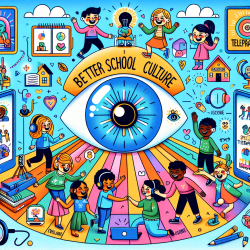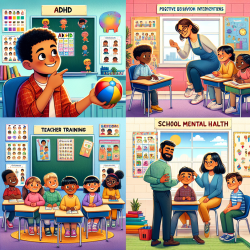The recent study titled "The effect of parental regulatory focus on the loneliness stigma of college children" provides valuable insights into the intricate dynamics between parental regulatory focus and the loneliness stigma experienced by their college-aged children. For practitioners working in speech-language pathology, especially those involved with online therapy services like TinyEYE, understanding these dynamics can be instrumental in crafting effective interventions.
Key Findings and Implications
The study reveals that both promotion and prevention regulatory focuses play significant roles in shaping the loneliness stigma of college students. Here's a summary of the key findings:
- Intergenerational Transmission: Parents' regulatory focus (promotion or prevention) and loneliness stigma significantly predict the same in their children. This highlights the importance of parental influence on children's psychological outcomes.
- Actor-Partner Interdependence Model (APIM): Both fathers' and mothers' regulatory focuses have significant impacts not only on their own loneliness stigma but also on their spouses'. This interdependence suggests that family dynamics play a crucial role in shaping individual perceptions and attitudes.
- Mediation Effects: The study's mediation model shows that parents' regulatory focus affects their children's loneliness stigma through multiple pathways, including the children's own regulatory focus and the parents' loneliness stigma.
Practical Applications for Practitioners
Understanding these findings can help practitioners develop more targeted and effective interventions:
- Family-Centered Approaches: Interventions should consider the family context, addressing both parents' and children's regulatory focuses and loneliness stigma. Engaging parents in therapy sessions and educating them about their influence can be beneficial.
- Tailored Interventions: Recognize that promotion-focused and prevention-focused individuals may require different approaches. For instance, promotion-focused individuals might benefit from strategies that emphasize positive outcomes and growth, while prevention-focused individuals might need strategies that mitigate risks and enhance safety.
- Enhancing Self-Regulation: Helping children and parents develop better self-regulation skills can reduce loneliness stigma. Techniques like cognitive-behavioral therapy (CBT) and mindfulness can be effective in this regard.
Encouraging Further Research
While this study provides a solid foundation, further research is needed to explore the nuances of these dynamics across different cultures and age groups. Practitioners are encouraged to stay updated with the latest research and consider contributing to this field through their own studies and observations.
Conclusion
The insights from this study underscore the profound impact of parental regulatory focus on the loneliness stigma experienced by college-aged children. By integrating these findings into their practice, speech-language pathologists can develop more holistic and effective interventions, ultimately fostering better outcomes for children.
To read the original research paper, please follow this link: The effect of parental regulatory focus on the loneliness stigma of college children.










